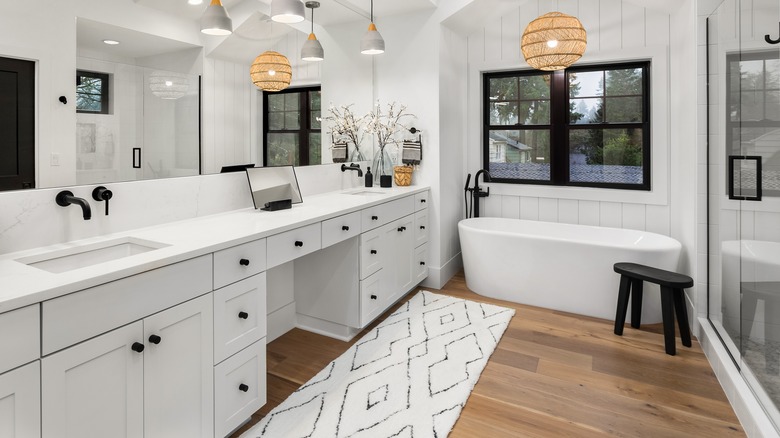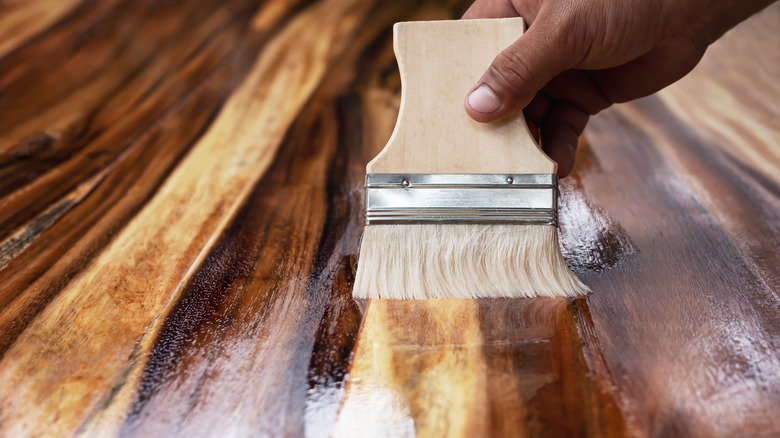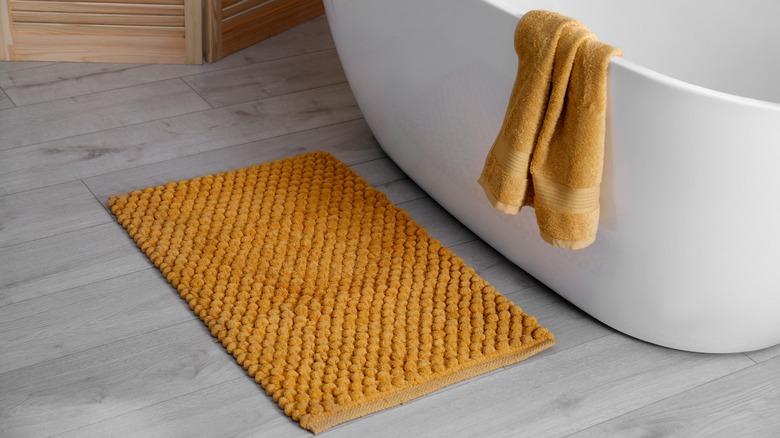How To Protect Hardwood Flooring In Your Bathroom
Hardwood flooring is more than a mere design selection — it embodies elegance, luxury, and a sense of timelessness that few materials can match, yet incorporating such material into a space known for its humidity and moisture can be daunting. However, with proactive care and the right preventative measures, it's entirely feasible to maintain the pristine condition of hardwood floors, even amidst the challenges presented by a bathroom environment. By sealing your floors, using bath mats, and maintaining plumbing fixtures, you can ensure that your hardwood's rich grains and vibrant hues remain unmarred by the challenges of the bathroom environment. Indeed, a little attention goes a long way.
Hardwood flooring can be a substantial financial investment — its premium stems from its constitution of natural, organic materials harvested from revered trees like oak, maple, and walnut. Therefore, your goal extends beyond merely preserving the aesthetics of your flooring, you're also safeguarding the very essence and lifespan of a significant investment.
This inherent natural composition has a keen sensitivity to external elements. Whether it's the ambient humidity, fluctuating temperatures, or the play of light, these factors can significantly influence the state of the wood. When continually subjected to such environmental elements, your hardwood floor faces the threats of wear and dimensional shifts. Regular and diligent maintenance emerges as paramount, not only to champion the vibrant visual allure of your floor but also to fortify its foundational structure and resilience.
Seal and protect
If your hardwood floors seem to soak up water quickly, it might be time for a protective top coat. In choosing a finish, water resistance should be your top priority. While you may prefer water-based polyurethane finishes because of their durability, don't forget about the benefits of a penetrating oil finish. It seeps into the wood fibers, nourishing them and forming a shield against moisture. Remember, floor finishes don't possess an eternal lifespan — they degrade with time, losing their effectiveness. To ensure your floor remains in top shape, schedule regular refinishing. Depending on the foot traffic your floor experiences and the moisture it encounters daily, a recoating every 1-3 years is recommended to maintain its luster.
When installing hardwood in places like bathrooms, be mindful of the wood's behavior in humid conditions. Due to the increased moisture, wood tends to expand and shrink more. To counter this, ensure you leave gaps around the bathroom's perimeter during installation. Though moldings or baseboards can be used to hide them, these gaps are vital. They offer the needed space for the wood to adapt, minimizing potential damage from warping or buckling. Every step you take, from the choice of finish to maintaining a suitable environment, plays a pivotal role in keeping your hardwood floor as splendid as it was on day one.
Routine care and quick actions
As a hub of daily activities, your bathroom invariably experiences splashes, spills, and unexpected drips. Given the moisture-sensitive nature of hardwood, it becomes imperative to shield it from such water-related adversities. One of the proactive approaches to ensuring its longevity is diligently maintaining all plumbing fixtures. Leaky faucets, dripping showerheads, or faulty seals exacerbate water exposure and can lead to pooling, which is detrimental to hardwood. Regularly checking and upkeeping these fixtures can significantly mitigate risks, ensuring that your beautiful hardwood remains in pristine condition despite the bathroom's damp environment.
Elevate your bathroom by strategically placing non-slip, water-resistant mats or rugs. Position them thoughtfully, especially in front of the sink, toilet, bathtub, or shower. These additions do more than complement your décor. They act as the first line of defense, capturing water droplets and minimizing their contact with the hardwood. However, remember to clean and dry these mats and rugs regularly, ensuring mold doesn't find a cozy home underneath. Their primary purpose is to ensure that water stays where it should, preventing any spills or splashes from reaching and potentially damaging your hardwood floor.


